General
Mak 70th Grad PhD Citations Session 1, Part 1
Published
6 years agoon
College of Agricultural and Environmental Sciences (CAES)
PARIYO Anthony (RIP)
Resolution of genetic structure for resistance to cassava brown streak disease: germplasm diversity, resistance stability and inheritance patterns.
Mr. PARIYO Anthony (RIP) studied the genetic structure for resistance to cassava brown streak disease (CBSD), an acute disease that has for decades limited optimal cassava productivity in eastern and southern Africa, which is incited by cassava brown streak viruses (CBSVs). Lack of information on genetic diversity, stability and the mode of inheritance of resistance to CBSD severely limits efforts tailored towards its control. The study resulted into three principal conclusions to guide future work: 1) low frequency of CBSD resistance alleles in eastern Africa cassava germplasm; 2) different CBSD resistance gene actions for foliar and root plant parts; 3) significant environments effects, with Namulonge located in central region, being the most suitable location for CBSD resistance screening. This study was funded by the world Bank coded Millennium Science Initiative, through Government of Uganda, and was supervised by Prof. Phinehas Tukamuhabwa and Dr. Yona Baguma.
ACHORA Janet Cox
Use of Information and Communication Technologies in conservation agriculture knowledge pathways among smallholder farmers in Machakos and Laikipia counties, Kenya
Ms. ACHORA Janet Cox examined the use of Information Communication Technologies (ICTs) in conservation agriculture knowledge pathways among smallholder farmers in Machakos and Laikipia counties, Kenya. To suggest ways in which emerging ICTs can be integrated for enhanced conservation agriculture knowledge sharing, the study identified that the fragmented conservation agriculture knowledge network, the minor role of ICT actors in conservation agriculture knowledge sharing, the low integration of ICT tools and ICT capacities of conservation agriculture actors, constrained the optimal use of ICTs in conservation agriculture knowledge sharing. The study established that an integrated ICT knowledge sharing framework could improve and integrate the use of emerging ICTs for conservation agriculture knowledge sharing. This study was self-funded and partly supported by the Regional Universities Forum for Capacity Building in Agriculture (RUFORUM), and was supervised by Dr. Haroon Sseguya and Dr. Florence Birungi Kyazze.
BUKUSUBA John
Modelling the impact of stunting on childhood survival in Buhweju District and the cost of its prevention
Mr. BUKUSUBA John studied the risk factors for the high rate of stunting in Buhweju District, and modelled the impact of its reduction on child survival and the cost of interventions required. The study found half of the children under 5 years were stunted and boys were more stunted than girls. Stunting was largely attributed to low coverage of child survival interventions, morbidity, low consumption of animal-source foods, food insecurity, poverty, and lack of knowledge about stunting. The cost for the reduction of stunting was estimated at US$ 21.2 million for the period 2018-2030, necessitating an additional US$ 250,000 per year for scale up. The interventions and costed strategy can be adapted for the 5-year district development plan and the development of a new multi-sectoral nutrition policy and national development plan. This study was funded by Nestlé Foundation, and was supervised by Prof. Archileo N. Kaaya and Dr. Abel Atukwase.
BYAKIKA Stellah (Ms)
Studies on the safety of Obushera and probiotic potential of selected lactic acid bacteria
Ms. BYAKIKA Stellah examined the safety of Obushera, a popular fermented cereal-based beverage from Uganda. This was motivated by the increasing uncontrolled commercial production of Obushera which compromises consumer safety. She also evaluated the potential contribution of three lactic acid bacteria isolated from Obushera towards improving product safety and human health. Findings showed presence of virulent, antibiotic-resistant and acid-tolerant Escherichia coli and aflatoxins in some Obushera sold in Kampala. The isolates; Lactobacillus plantarum MNC 21, Lactococcus lactis MNC 24 and Weisella confusa MNC 20 bound aflatoxins, inhibited Escherichia coli and exhibited the potential to reduce blood cholesterol, stimulate insulin release and stabilize heart pressure. Adoption of the isolates in processing of Obushera and related products could improve safety and health. The study was co-funded by Mr. Samuel K. Byakika and the Food Technology and Business Incubation Center, and was supervised by Assoc. Prof. Ivan Muzira Mukisa and Prof. Charles Muyanja.
GEBREMEDHN Hailay Mehari
Genetic Resistance to Soybean Rust (Phakopsora Pachyrhizi) in Line UG-5
Mr. GEBREMEDHN Hailay Mehari studied the genetic resistance to soybean rust in line UG-5. Soybean rust (SBR) is a devastative foliar diseases causing high yield losses worldwide. In Uganda, a local line UG-5 seems to have unique genes showing potential contribution towards improvement of SBR, but genetic control of its resistance is not yet characterized. The study revealed significant GCA effects and high Baker’s ratio, suggesting the predominance of additive gene action in the inheritance of SBR resistance. Three putative QTLs were identified on chromosomes 6, 9 and 18. The QTL detected on chromosome 9 was novel and has not been reported elsewhere. Plant defense signaling pathway-related candidate genes were predicted from the QTLs on chromosomes 9 and 18, which could facilitate efficient MAS and gene pyramiding for the development of durable resistance to SBR. This study was funded by INTRA-ACP Mobility Scheme, and was supervised by Prof. Phinehas Tukamuhabwa and Dr. Tomas L. Odong.
KIRYOWA Moses
Resistance spectrum to anthracnose disease and the genetic effect of pyramided genes on yield in common bean
Mr. KIRYOWA Moses determined the pathogenic variability of Colletotrichum lindemuthianum (fungus causing anthracnose disease); assessed the effectiveness of pyramided resistance genes against anthracnose disease; and determined genetic effect of pyramided genes on yield in beans. C. lindemuthianum was highly variable with 24 new physiological races, worthy of attention. Pyramided genes in the right combination conferred broad-spectrum resistance but with a yield penalty. Some single genes conferred broad-spectrum resistance but may not be durable. The decision to pyramid resistance genes should, therefore be weighed against the threat the pathogen poses. The effective single and pyramided genes are a resource for breeders and pathologists. This study was funded by the National Agricultural Research Organization (NARO) and the International Centre for Tropical Agriculture (CIAT) -Uganda and was supervised by Prof. Phinehas Tukamuhabwa and Dr. Stanley Nkalubo.
KUMI Frank
Studies of sorghum resistance to downy mildew (Peronosclerospora sorghi) disease in Uganda
Mr. KUMI Frank studied the prevalence, distribution and population structure of downy mildew disease in major sorghum growing districts in Uganda. He also characterized Peronosclerospora sorghi isolates which causes downy mildew disease. His study found Arua, Namutumba and Pallisa as downy mildew disease hotspots. In addition, temperature, relative humidity and rainfall were the main drivers for downy mildew epidemics. He further screened Uganda sorghum germplasm for sources of resistance to downy mildew disease under different disease pressure. Two parents and seven crosses were identified as good transmitters of resistance to downy mildew disease and are recommended as lines in a sorghum breeding programme targeting downy mildew resistance and yield improvement. This study was funded by Intra-ACP CSAA project and RUFORUM, and supervised by Prof. Patrick Rubaihayo and Dr. Moses Biruma.
MIESHO Belay
Genetics of cowpea resistance to bruchid (Callosobruchus maculatus Fab.)
Mr. MIESHO Belay studied Bruchids (Callosobruchus maculatus), which is one of the most destructive insect-pests of cowpea causing significant losses in storage. The study was designed to contribute to the reduction of cowpea storage losses through elucidation of cowpea genetics of resistance to bruchids. Through intensive phenotyping, seed biochemical and inheritance studies, four cowpea genotypes (2419, WC42, TVu-2027and IT84s-2246) resistant to bruchids were identified and recommended as donor parents for cowpea breeding against bruchids. Furthermore, eleven genomic regions and six candidate genes associated with the resistance traits were identified using genome-wide association study which could be used for marker assisted breeding. This study was funded by DAAD and Carnegie through RUFORUM; and University of California through MaRCCI; and was supervised by Prof. Patrick Rubaihayo and Prof. Samuel Kyamanyawa.
MSISKA Mercy Ulemu
Genetic resistance to adzuki bean bruchid in soybean
Ms. MSISKA Mercy Ulemu studied the genetic resistance to adzuki bean bruchid (Callosobruchus chinensis) in soybean. Utilization of resistant varieties to manage bruchids is obstructed by lack of sources of resistance and information on genetics of inheritance. Msiska’s study established sources, basis and inheritance of resistance to C. chinensis in soybean. Two genotypes; AVRDC G8527 and PI G89 were identified as sources of resistance. High tannins, total antioxidants, peroxidase activity and low flavonoids were biochemicals associated with resistance. Potential parents in breeding for resistance were SREB-15C, S-Line 9.2 and S-Line 13.2A. Crosses of the SREB-15C x S-Line 13.2A and SREB-15C x Maksoy 3N were recommended as start up material for the breeding programme. This study was funded by Intra ACP-CSAA, APPSA and Carnegie Corporation of New York through RUFORUM, and was supervised by Prof. Phinehas Tukamuhabwa and Prof. Samuel Kyamanywa.
NATABIRWA Hedwig (Ms)
Common bean (Phaseolus vulgaris, L.) extrusion cooking: process optimization and product evaluation
Ms. NATABIRWA Hedwig researched on extrusion of biofortified common beans, with focus on improving the nutritional quality of expanded starchy snack foods, commonly consumed by children. Her work showed that extruded bean product properties were associated with the bean chemical components, and influenced by the extrusion cooking conditions used. She optimized extrusion conditions, thus producing a bean snack with high protein and iron content, and improved protein digestibility. Her research proved that biofortified common beans can be used to produce highly acceptable and nutritive puffed snacks, thus promoting increased intake of macro- and micro-nutrients. The developed process provides an alternative and economically feasible extrusion processing methodology that can be used by industry for production of nutritious expanded snack products. The study was funded by the ADB-GOU HEST research corporation through CIAT and supervised by Prof. John H Muyonga and Assoc. Prof. Dorothy Nakimbugwe.
NDIRIGUE Jean
Adaptation and genetic analysis of earliness and yield component traits of yam bean (Pachyrhizus Spp.) in Rwanda
Mr. NDIRIGWE Jean studied the adaptation and genetic analysis of earliness and yield component traits of yam bean (Pachyrhizus Spp.) in Rwanda. Yam bean, a high yielding and rich root crop in Latin America and Asia was recently introduced into Rwanda for integration into the diverse farming agro-ecologies and improvement of diets of root crop dependent communities. Ndirigwe’study identified high genetic variability, heritability and significant high general ability, specific ability and their variance components indicating that both additive and non-additive genes control earliness traits and expected genetic gain could be expected in genetic improvement of yam beans introduced. High yielding and well adapted genotypes were AC 209033, AC 209035 and EC209018 and were recommended for participatory farmer’s selection. This study was funded by the Belgium Technical Cooperation, and was supervised by Prof. Phinehas Tukamuhabwa and Prof. Emeritus Patrick Rubaihayo.
ONYILO Francis
Functional genetics in ascomycetes Pseudocercospora fijiensis (Synonym Mycosphaerella fijiensis) the pathogen of black sigatoka disease in banana.
Mr. ONYILO Francis studied Functional Genetics in ascomycetes Pseudocercospora fijiensis (formerly Mycosphaerella fijiensis) the pathogen of black Sigatoka in Banana. Francis isolated and characterised Mitogen activated protein kinase encoding genes; PfHog1, PfSlt2 and PfFus3 which are responsible for growth and virulence of Pseudocercospora fijiensis. He developed an RNA interference mediated gene silencing mechanism and an Agrobacterium tumefaciens mediated transformation procedure to introduce genes into mycelium fragments of Pseudocercospora fijiensis. His research is a step towards developing banana cultivars with resistance to black Sigatoka disease. This will help increase overall banana production. Functional genetic tools developed by Francis can be used to investigate other fungal pathogens example Magnaporthe oryzae of Rice. This Study was funded by Norman Borlaug Leadership Enhancement in Agricultural Programme University of California Davis USA and Agricultural Biotechnology Support programme II – USAID. His research was conducted under the mentorship of Prof. Bryce Falk and Prof. Ioannis Stergiopoulos. He was supervised by Dr. Tusiime Geoffrey and Dr. Leena Tripathi.
OPOLOT Henry Nakelet
Unraveling critical factors for a responsive university-farming community engagement in Uganda: insights from two outreach projects at the School of Agricultural Sciences, Makerere University
Mr. OPOLOT Henry Nakelet explored factors for development of a systematic long-term engagement framework between universities and farming communities. Findings showed that: the quality of teaching using participatory methods for development of lifelong skills; field attachment duration and appropriateness of host organizations to support practical learning; timely sharing of information; and farmers’ capacity development are critical for enhancing the role of universities on agricultural development. The study recommended strengthening application of participatory teaching methods for students to develop lifelong learning skills, increasing field attachment duration in accredited organizations for enhanced practical learning, integration of ICTs for timely information sharing, and mainstreaming farmer training into outreach activities. The study also suggested introduction of a post-graduation apprenticeship as an avenue for professional skills development and long-term engagement. This study was funded by RUFORUM CARP03 Project, and was supervised by Dr. Prossy Isubikalu & Dr. Bernard Obaa.
ORIANGI George
Urban resilience to climate extremes in Mbale municipality in Eastern Uganda
Mr. Oriangi George investigated historic and projected occurrence of precipitation extremes up to the year 2050, assessed factors perceived to be influential in enhancing resilience and proposed and tested a Municipality Resilience Index (MRI) to measure household resilience to precipitation extremes in Mbale municipality. Findings revealed that extreme precipitation periods have become and are likely to become more frequent between September and January. Additionally, household ability to meet its daily expenditure needs, household size, networks with NGOs, health care, education, access to credit and employment showed to be crucial factors in enhancing resilience to precipitation extremes. The MRI revealed that Mbale municipality has a low resilience index (0.2). Thus, contributing to previous studies on community resilience and bear relevance for practitioners to understand where to invest more resources to enhance resilience. This study was funded by SIDA and was supervised by Assoc. Prof. Yazidhi Bamutaze, Dr. Paul Isolo Mukwaya and Prof. Petter Pilesjö.
WASUKIRA Arthur
Comparative analysis of genotypic diversity among Xanthomonas campestris pv. musacearum and Xanthomonas vasicola pv. vasculorum strains
Mr. WASUKIRA Arthur conducted genome wide association studies on bacterial wilt isolates from banana, ensete and sugarcane from Eastern Africa. Bacterial wilt continues to reduce banana productivity and therefore affect livelihoods. He determined two major clades of bacterial strains within Eastern Africa, sequenced fourteen Xanthomonas strains and identified thirty-two specific candidate genes. The genome assemblies are useful in molecular dating studies, specific genetic markers used in functional, epidemiological and biogeographical research. New breeding technologies use pathogen-derived effectors as molecular probes to identify resistance genes for genetic plant protection. This study contributes to transgenic development of banana bacterial wilt resistance through gene editing. The study was funded by Millennium Science Initiative/NARO, University of Exeter, and was supervised by Dr. Geoffrey Tusiime and Dr. Jerome Kubiriba.
Please click the links below to navigate to the PhD Citations for the respective Sessions.
< Director’s Message | Session 1: Part1: Part2 : Part3 | Session 2 | Session 3 | Session 4 >
#Mak70thGrad
You may like
General
Makerere University Leaders Call for Excellence in Research and Supervision as Academic Staff and PhD Students Receive Certificates
Published
5 days agoon
December 17, 2025By
Mak Editor
By Moses Lutaaya
Kampala, 15 December 2025 — Makerere University on Monday held a reflective and inspiring Certificate Award Ceremony at the CTF 2 Auditorium , Yusuf Lule to award academic staff who completed the Graduate Supervision and Mentorship Course and PhD Students who successfully undertook the University’s compulsory cross-cutting doctoral courses. The event was presided over by the Deputy Vice Chancellor – Academic Affairs, Prof. Sarah Ssali.
The ceremony honored the efforts and achievements of 58 academic staff members, 39 men and 19 women from various colleges including CEDAT, CAES, CEES, COVAB and COBAMS, who completed a rigorous three-week Graduate Supervision and Mentorship programme.
Additionally, PhD students were recognized for completing cross-cutting courses in Philosophy of Methods, Scholarly Writing and Communication, and Advanced Research Methods.
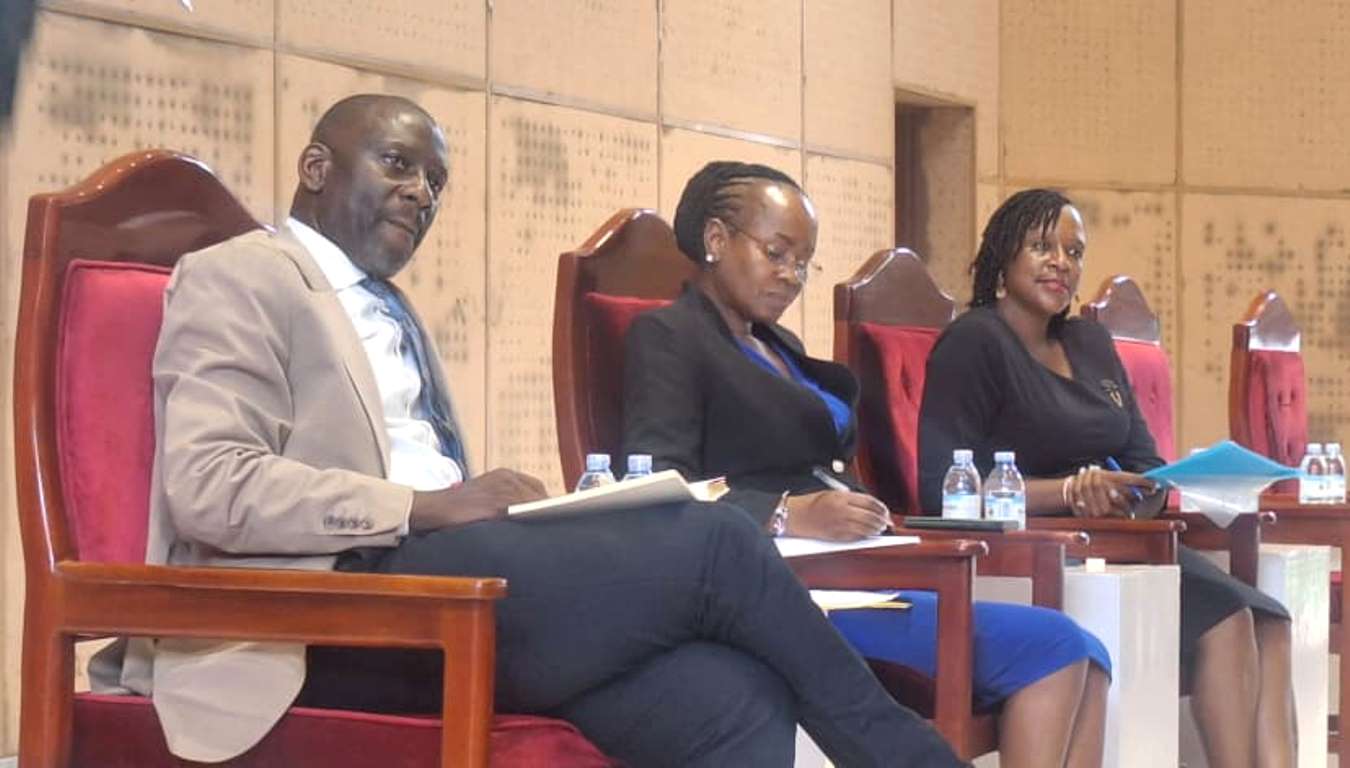
In her keynote remarks, Prof. Sarah Ssali, the Deputy Vice Chancellor–Academic Affairs, delivered a message of encouragement and renewed commitment to research excellence at Makerere University.
“It is both an honor and a privilege to be here today to celebrate a significant academic milestone, the completion of the PhD Cross-Cutting Courses by our students and the award of Supervision Certificates to our academic staff.”
“Your completion of this course is not just a personal achievement, but a critical contribution to strengthening the research and mentoring capacity of Makerere University.”
To the PhD students, Prof. Ssali offered warm congratulations and encouragement. “These courses have equipped you with essential tools to conduct high-quality, ethical research and to engage with complex academic questions. This achievement reflects your hard work, intellectual growth, and commitment to excellence.”
She reaffirmed Makerere University’s commitment to research advancement. “As a University, we remain deeply committed to fostering a culture of research excellence. We will continue to invest in both our students and our staff, ensuring that we uphold the highest standards in research and academic supervision.”
The Director of Graduate Training, Prof. Julius Kikooma, challenged the PhD students to approach research with urgency, intentionality, and a clear sense of purpose.
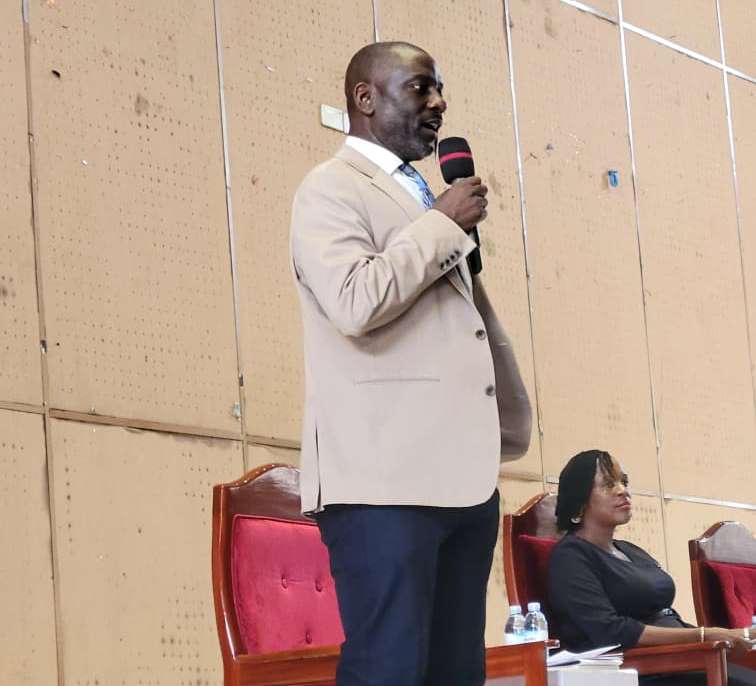
“Completing the crosscutting courses in Philosophy of Methods, Advanced Research Methods, and Scholarly Writing and Communication has not been an easy task. However, the certificate alone is not the end goal. Don’t simply compile these certificates. Make them meaningful.”
Prof. Kikooma emphasized that the value of the courses lies in applying the knowledge gained. “These certificates give you the foundation knowledge. The question now is: Can we see the application of that knowledge in your different fields?”
He further urged doctoral students to begin producing serious academic work now, not at the end of their studies. “If you are becoming someone to be listened to, start now. It means the course is becoming useful. Write about issues that speak to societal challenges. Produce thinking pieces. Produce better outputs. “Look for low-lying fruits that can make your PhD journey more exciting and impactful.”
Prof. Kikooma also reminded students that while the PhD journey is shared by the academic community, its weight is uniquely felt by the candidates. “Your PhD journey is ours as a group. But you feel the heat. Speak to us so we understand your challenges. “You cannot be here for more than three years. Why are some of you still here? Is the journey heavy? How can we support you to complete it?” He asked.
He encouraged students to build thought leadership through the PhD Forum, adding that the forum is a strong voice for the students. A PhD is automatic leadership in the knowledge domain. Why doesn’t the PhD Forum come up with periodic writings that reflect what communities are experiencing? Start now so that by the time you finish the course, you hit the ground running.”
The Ag. Director of the Centre for Teaching and Learning Support (CTLS), Dr. Dorothy Ssebowa Kyagaba, gave a message to the academic staff who completed the Graduate Supervision and Mentorship Course, speaking with admiration for their dedication and high level of engagement.

“I congratulate all the academic staff who have completed the three-week Graduate Supervision and Mentorship Course. Your commitment, hard work, and enthusiasm have been evident throughout the training.”
She described the course as a cornerstone of Makerere’s commitment to strengthening graduate supervision. “This course is a key component in Makerere University’s drive to strengthen the quality of graduate training, research supervision, innovation, and strategic partnerships.”
She highlighted the thematic richness of the training; covering Knowledge Production Perspectives, Supervisory styles, Supervisory meetings and conversation skills, Research Ethics, Intercultural supervision and diversity, Scholarly writing and feedback as well as Examination processes and Doctoral Viva. She expressed gratitude to the Directorate of Graduate Training led by Prof. Kikooma, and to Prof. Ssali for providing leadership that advances graduate training across Makerere University.
General
US$ 162m KEXIM Loan Approval Timely for Makerere University
Published
5 days agoon
December 17, 2025By
Mak Editor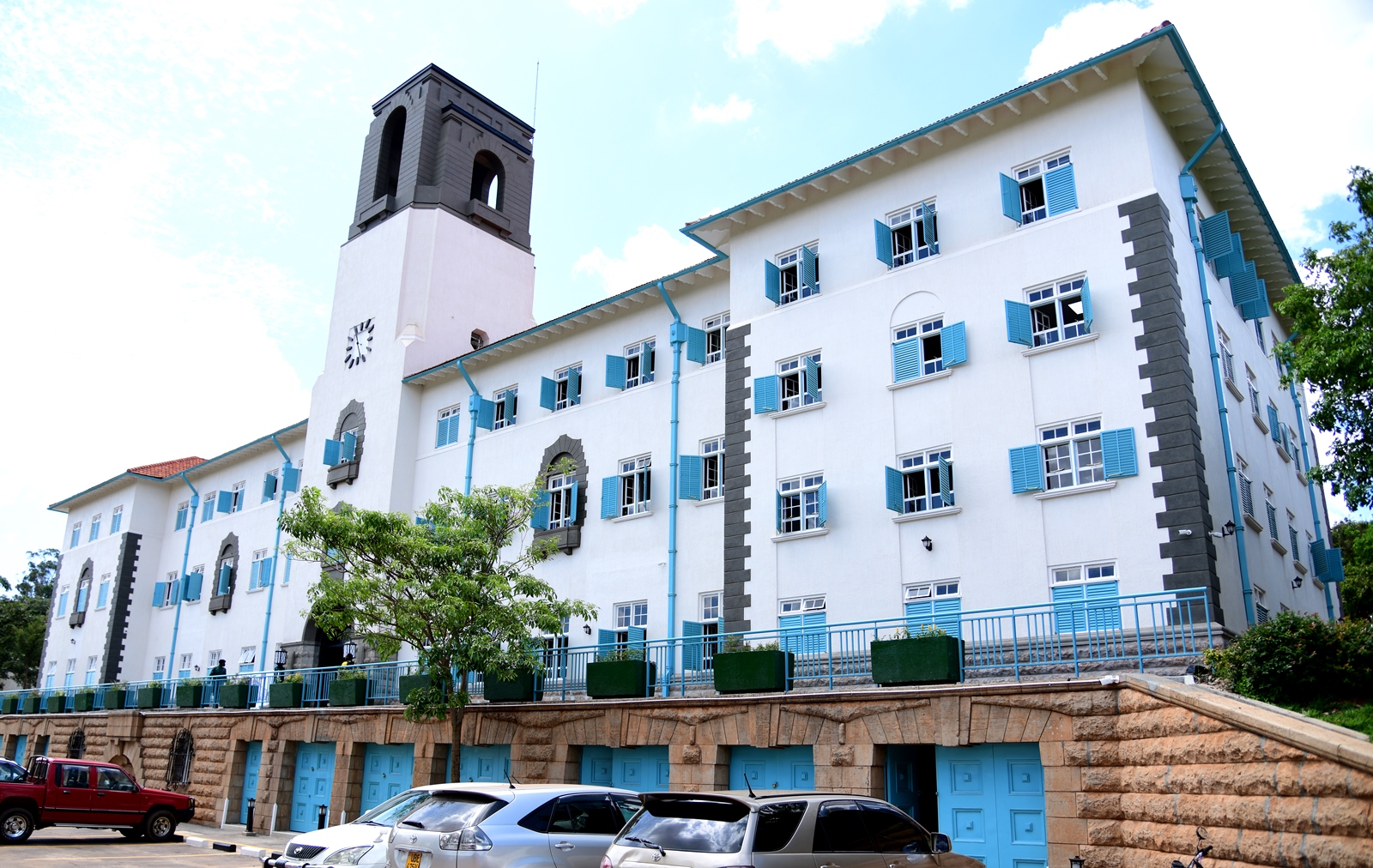
The approval by the Parliament of Uganda of a US$162 million concessional loan from the Korea Export-Import Bank (KEXIM) on 16th December 2025 marks a pivotal moment for Makerere University, as the institution enters the fourth year of its second century of existence. This funding approval comes at a critical moment as the university underscores its intention to become research-intensive, against the pressing need to align with global standards in science, technology, engineering, and mathematics (STEM) education.
With student numbers growing from 5,000 three decades ago to approximately 35,000 today, Makerere‘s facilities continue to be stretched. The loan’s timely approval during a plenary session chaired by Deputy Speaker Rt. Hon. Thomas Tayebwa, underscores the government’s commitment to revitalizing higher education amid national development goals outlined in the National Development Plan IV and the Ten-fold Growth Strategy.
Anticipated Developments
The loan will finance the construction of a state-of-the-art science and technology center, complete with advanced laboratories and innovation hubs for engineering disciplines. Upgrades to existing labs and smart classrooms at the College of Computing and Information Sciences are planned, alongside new buildings for Electrical, Civil and Mechanical Engineering Departments.
The College of Health Sciences will see expanded preclinical education facilities, and a dedicated structure for the School of Dentistry will incorporate cutting-edge equipment for dental technology, education, and clinical practice. These initiatives are not mere expansions; they aim to elevate Makerere to international benchmarks, fostering an environment where students can engage in hands-on research and practical training.
Furthermore, capacity-building programs will empower staff to harness new technologies, ensuring sustainable operations long after the 42-month implementation period, spanning financial years 2025-2026 to 2029-2030. The timing couldn’t be more opportune. Uganda’s ratio of science and technology graduates to humanities remains at 2:5, a ratio the loan is anticipated to improve to least 3:5 by 2030.
The loan facility addresses immediate challenges like inadequate spaces for growing programs, such as the Bachelor of Medicine and Bachelor of Surgery, which has seen a rise in intake, with increased interest from international applicants. Additionally, by investing in PhD training at Makerere, the loan reduces reliance on costly overseas programs, enabling resources to be redirected toward comprehensive educational enhancements.
Government’s Broader Strategy
Makerere as the premier regional institution has been prioritized to receive funding based on Government’s recognition of the trickle-down effect that enhancing the capacity at the university has on other higher education institutions and the education ecosystem. This approval builds on Makerere‘s legacy of resilience, positioning it as a beacon for African innovation. In an era where technological advancement defines global progress, this loan propels Makerere toward producing graduates equipped to tackle real-world challenges, from climate resilience to digital transformation.
Ultimately, the KEXIM loan is a timely catalyst for Makerere‘s renaissance. It not only revamps physical infrastructure but also reignites the university’s role in socio-economic transformation, with the Ministry of Education and Sports (MoES) as the executing agency. Therefore, as Uganda eyes Ten-Fold Growth from approximately $50 billion (2023) to $500 billion by 2040 via Agro-industrialisation, Tourism, Mineral-based industrialisation, Science and Technology/ICT (ATMS), empowering Makerere University is not just strategic—it’s essential.
Taking Stock of Previous Support
The African Development Bank’s (AfDB) US$29.2 million under the HEST program in 2016 funded infrastructure at Makerere, including two centralised teaching facilities with lecture rooms, auditoriums, e-learning labs, and specialized facilities like diagnostic, biotechnology, GIS, and computer labs. These transformed the skyline, enhanced large-class teaching, research access, and service provision to a thriving staff and students’ community.
General
Makerere University Hosts EU Delegation to Review Institutional Engagement in EU Cooperation Programmes
Published
6 days agoon
December 17, 2025By
Mak Editor
Makerere University today hosted a delegation of members from the European Union (EU) for a high-level engagement aimed at reviewing the University’s involvement in EU cooperation programmes. The meeting focused on the linkages between the Erasmus+ Programme, Makerere University’s internationalization strategy, and the related institutional management and coordination structures.
The delegation was received by Deputy Vice Chancellor (Academic Affairs) Professor Sarah Ssali, provided an overview of how EU cooperation programmes are coordinated across different offices within the University. She highlighted Makerere’s integrated institutional approach to managing EU-funded initiatives, emphasizing collaboration among academic units, administrative offices, and support departments to ensure effective implementation and sustainability of projects.
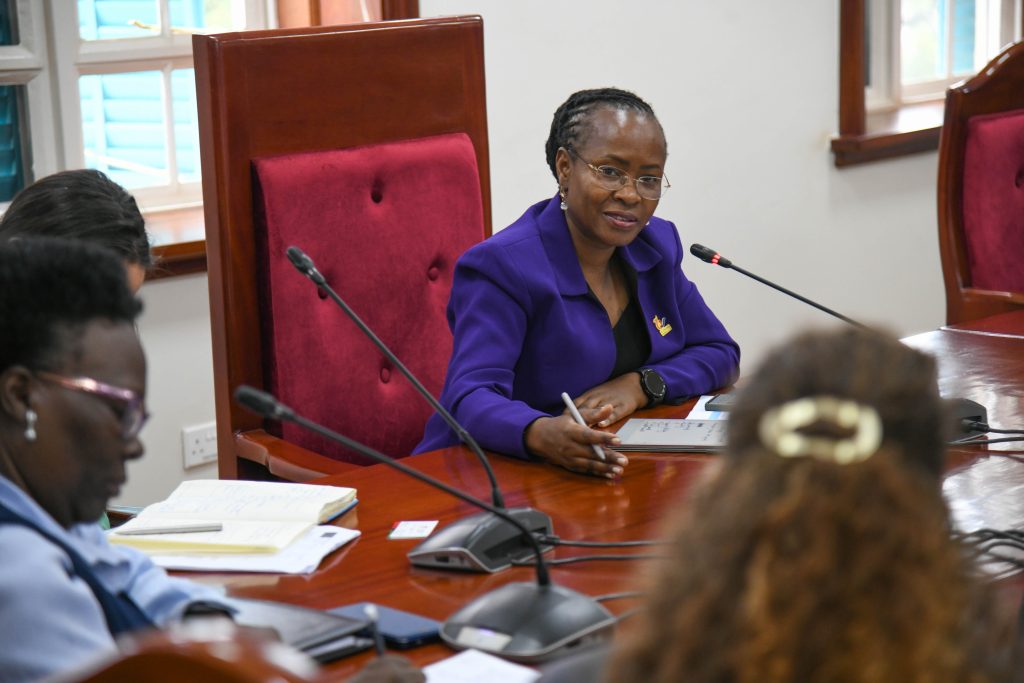
Prof. Sylivia Antonia Nakimera Nanyonga-Tamusuza presented an overview of how grants are handled at Makerere University, with particular emphasis on the role of the Grants Management and Support (GAMSU) Office. She explained that the office provides end-to-end support for externally funded projects, including proposal development, grant negotiation, compliance, financial accountability, reporting, and capacity building for project teams. The GAMSU Office plays a critical role in ensuring transparency, efficiency, and compliance with donor requirements, including those of the European Union.

The University Secretary, Mr. Yusuf Kiranda, addressed the meeting and outlined how the University’s resources are managed to support academic programmes and international cooperation initiatives. He further explained the role of the Office of the University Secretary in supporting students, including policy oversight, governance, student welfare, administrative coordination, and ensuring that institutional systems effectively support teaching, research, and international partnerships.
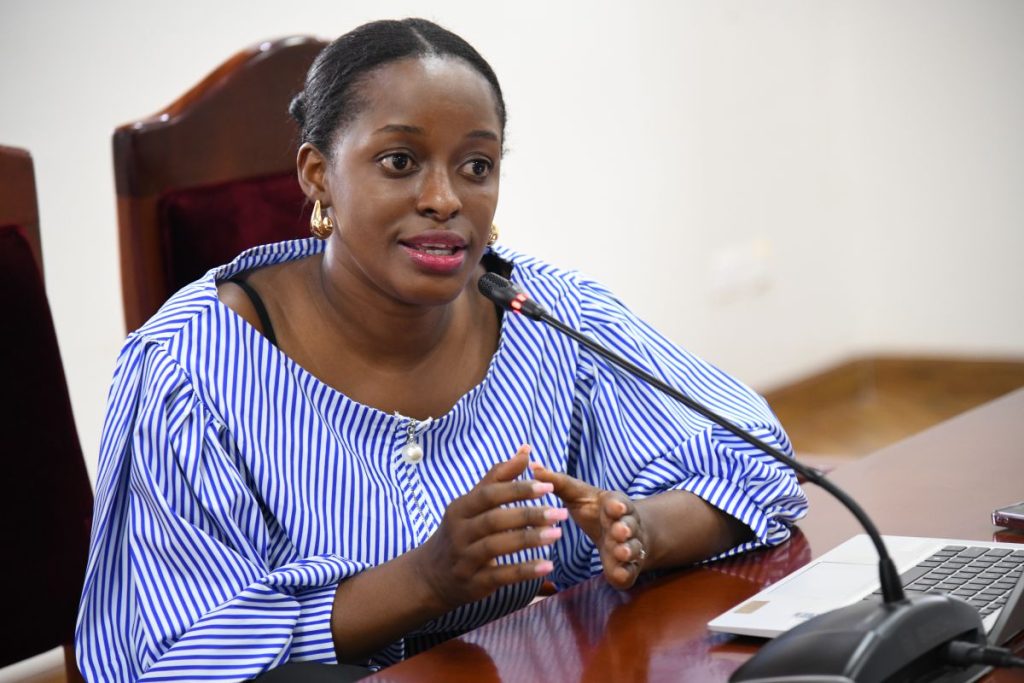
Ms. Betty Nabisubi from the International Relations Office (IRO) provided a comprehensive overview of how Erasmus+ programmes are coordinated within her office. She explained that the IRO supports Erasmus students and staff from the time they arrive at Makerere University until their departure. This includes orientation, immigration support, accommodation guidance, academic coordination, cultural integration, and continuous student support. She also highlighted additional services offered by the office, such as partnership development, mobility coordination, and facilitation of international collaborations.
Following the institutional presentations, project representatives were allocated 30 minutes for structured discussions with EU project contact persons. The session began with short presentations focusing on project results, impact, and sustainability, followed by an interactive discussion and question-and-answer session. The representatives presented their projects clearly and confidently, demonstrating strong outcomes and long-term impact aligned with both Makerere University and EU cooperation objectives.
Overall, the engagement was highly productive and fruitful, providing a valuable platform for knowledge sharing, reflection on best practices, and strengthening collaboration between Makerere University and the European Union. The discussions reaffirmed Makerere University’s commitment to effective internationalization, accountable project management, and sustained partnerships under EU cooperation programmes.
Trending
-

 Research3 days ago
Research3 days agoMakerere University Launches Knowledge-Sharing Platform to Drive Innovation and Economic Growth
-

 General5 days ago
General5 days agoMakerere University Leaders Call for Excellence in Research and Supervision as Academic Staff and PhD Students Receive Certificates
-

 Humanities & Social Sciences1 week ago
Humanities & Social Sciences1 week agoCollege of Humanities and Social Sciences Launches Five Groundbreaking Publications
-

 Health2 weeks ago
Health2 weeks agoProceedings of the National Annual Communicable and Non-Communicable Diseases and 19th Joint Scientific Health Conference 2025
-

 Health2 weeks ago
Health2 weeks agoInside Uganda’s Silent AMR Crisis: Counterfeit Drugs, Antibiotic Overuse, and What Wakiso’s Evidence Reveals
